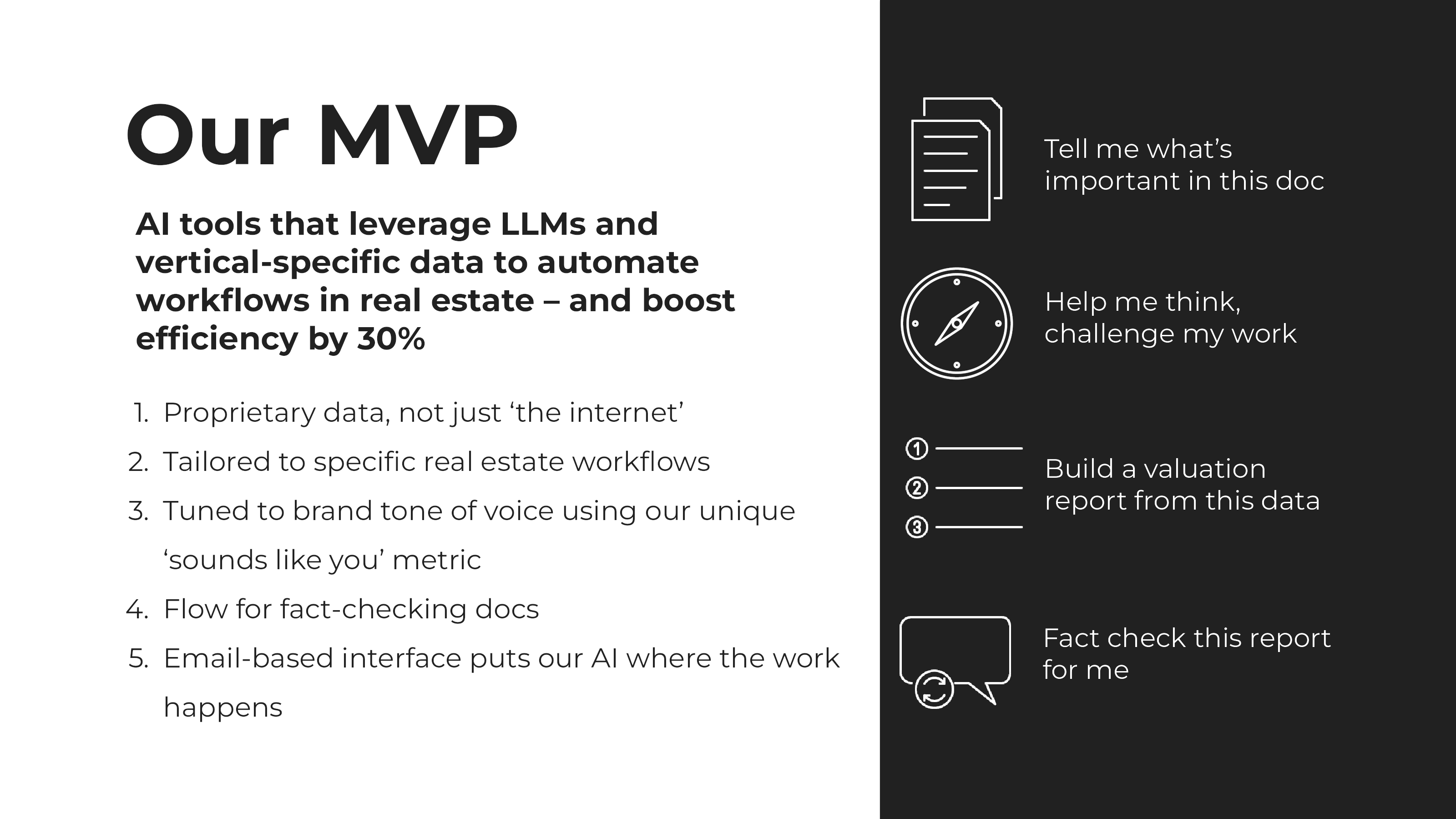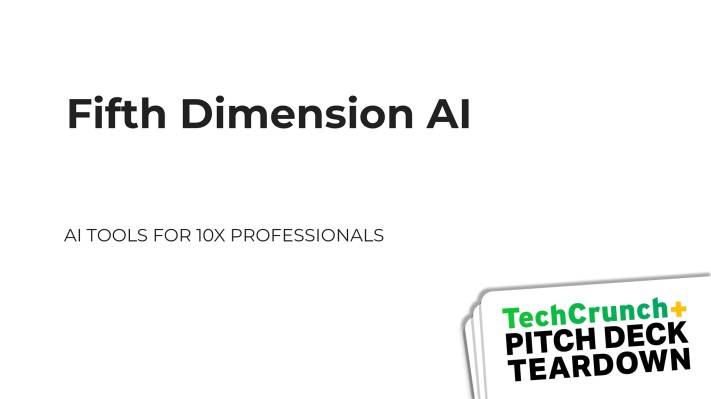AI is an interesting space to be in, especially with a few major players on the market. The name of the game for Fifth Dimension is to find strong points of differentiation from the general purpose AIs on the market and a strong go-to-market story that sets them apart. Does Fifth Dimension have those things? Let’s find out!
We’re looking for more unique pitch decks to tear down, so if you want to submit your own, here’s how you can do that.
Slides in this deck
In AI, you’d best have a strong differentiator, because you aren’t going to be competing on price.
Fifth Dimension AI used a tight 13-slide deck to raise its round. The deck is almost as pitched, but the team did remove some of the customer logos and customer quotes, as it prefers to keep those close to their vest. Here are the slides:
- Cover slide
- Problem slide part 1
- Problem slide part 2
- Solution slide
- Product slide
- Customer workflow slide
- Traction slide
- Moat slide
- Product vision slide
- Market size slide
- Adjacent markets slide
- Team slide
- Ask and use of funds slide
Three things to love
AI is a chaotic free-for-all right now, especially when it comes to the fundraising cycles. Data from PitchBook shows that fundraising for AI startups is outpacing every other company vertical at the moment. Still, you do have to stand out somehow. Here are some of the highlights from Fifth Dimension’s deck:
Bringing the problem to life
I love that the company used quotes to help give the problem some three-dimensionality:

[Slide 3] The problem impact slide tells a great story. Image Credits: Fifth Dimension AI
This also is a great example of using benefits-forward storytelling: You’re not selling an LLM or a virtual assistant. You’re selling a solution to some very specific problems, experienced by clearly defined target audiences.
Consider the following slide a masterclass in “show, don’t tell”:
Decent differentiation

[Slide 5] So why couldn’t you just use OpenAI? Image Credits: Fifth Dimension AI
As a data point, a tool I built that’s now analyzed close to 1,000 pitch decks, has used less than $25 worth of AI credits to do it, in total. When the competitors are almost unfathomably cheap, you’d best have a strong differentiator, because you aren’t going to be competing on price.
Adjacent-market sizing
Fifth Dimension does something very clever on slides 10 and 11: It shows that the first market it is going after is enormous, but it makes the argument that the adjacent markets that this unlocks are even bigger. The company comes dangerously close to flirting with being unfocused, but that note aside, this is very well done:

[Slide 11] Assuming that the core tech is transferable, this is a great way to show the company’s growth ambitions. Image Credits: Fifth Dimension AI
There are a few red flags in the deck, which would give me a lot of pause as a potential investor. In the rest of this teardown, we’ll take a look at three things Fifth Dimension AI could have improved or done differently, along with its full pitch deck!
Three things that could be improved
There’s a lot of things right with Fifth Dimension’s deck, but there are a few major issues as well.
What about the competition?
Every high-data industry is a potential target for AI, and we are headed toward a startup bloodbath. If you’re going to build something in this space, you’d best know who your competitors are — and be well differentiated from them. The absence of a competitive landscape slide is pretty much unforgivable. It means one of three things: The company doesn’t think it has competitors (that’s bad), it’s scared of the competitors (also not great), or the founding team is unsophisticated enough that it doesn’t think it needs to talk about the competition.
Dismal traction slide

[Slide 7] Redactions aside, this slide raises more questions than answers. Image Credits: Fifth Dimension AI
“We have paying customers” and then not saying how much revenue you are making is begging for some in-depth diligence and cross-examination.
Doing 30 research interviews is a bare minimum. No gold star; that’s literally the very least you can do as a founder.
And finally, “developed a sales pipeline” is the fuzziest, fluffiest traction metric I’ve seen in a while. What’s the value of the pipeline? How many customers are converting? There’s so much data missing here that my Spidey senses are tingling.
A suspicious fuzziness on the tech side
It’s unclear what the technology advantage is in this case. The company vaguely hints at proprietary data on its moat slide, but it doesn’t say anything about whether it built its own models or if it is using a customized off-the-shelf AI solution. If I squint, I see a company here that I could easily replicate in a month of development.
The company doesn’t really describe anything that’s hard or unique. That’s making me scared: Most of the AI decks I see these days have an obvious advantage due to proprietary, defendable technology. There’s none of that present here. Before I’d consider investing, I’d need to do a deep dive on the tech.
Startups need to explain why what they’re doing is moderately hard to replicate. The real estate market is huge, cutthroat, and has some major players in it (do a quick Google search for real estate CRM, and you’ll see what I mean). If this tech is built on top of something like OpenAI, you’d better believe that any of the large CRM companies with products focused on the real estate market will have competing solutions on the market before long. The scary advantage that these incumbents have is that they already have the customer base, so they start with a tremendous head start.
The full pitch deck
If you want your own Pitch Deck Teardown featured on TC+, here’s more information. Also, check out all our Pitch Deck Teardowns and other pitching advice, all collected in one handy place for you!
